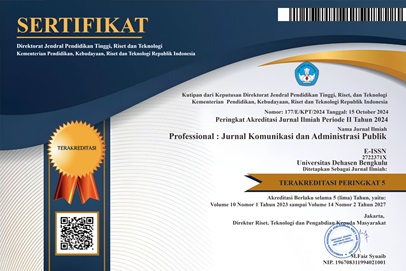Komodifikasi “Konten Anak” dalam Perspektif Ekonomi Politik Media
Abstract
This study aims to determine the commodification process carried out in children's content through the perspective of media political economy. This research is a descriptive qualitative research. The analysis was carried out using semiotic analysis from John Fiske which divided the levels of analysis into 3 levels, namely reality, representation and ideology. The subjects in this study were children's content in youtube shows. The objects in this study were selected using purposive sampling techniques. The results of the analysis showed that child-laden impressions became an attractive commodity. The naivety, purity, and spontaneity of children steal the attention of the audience. Creating shows containing highly sensitive parenting issues in Indonesia is a form of commodification of content. Making children objects in impressions is part of the commodification of workers. The audience also works to donate by providing views and likes which are then sold by content creators to advertisers to get endorsed products which will then again use the child as an endorser. Leaving aside things that contain information and education, prioritize revenue targets by selling sensations. In the end, content containing children is no different from other content that is oriented towards material profit alone.
Downloads
Copyright (c) 2024 Dionni Ditya Perdana

This work is licensed under a Creative Commons Attribution-ShareAlike 4.0 International License.





